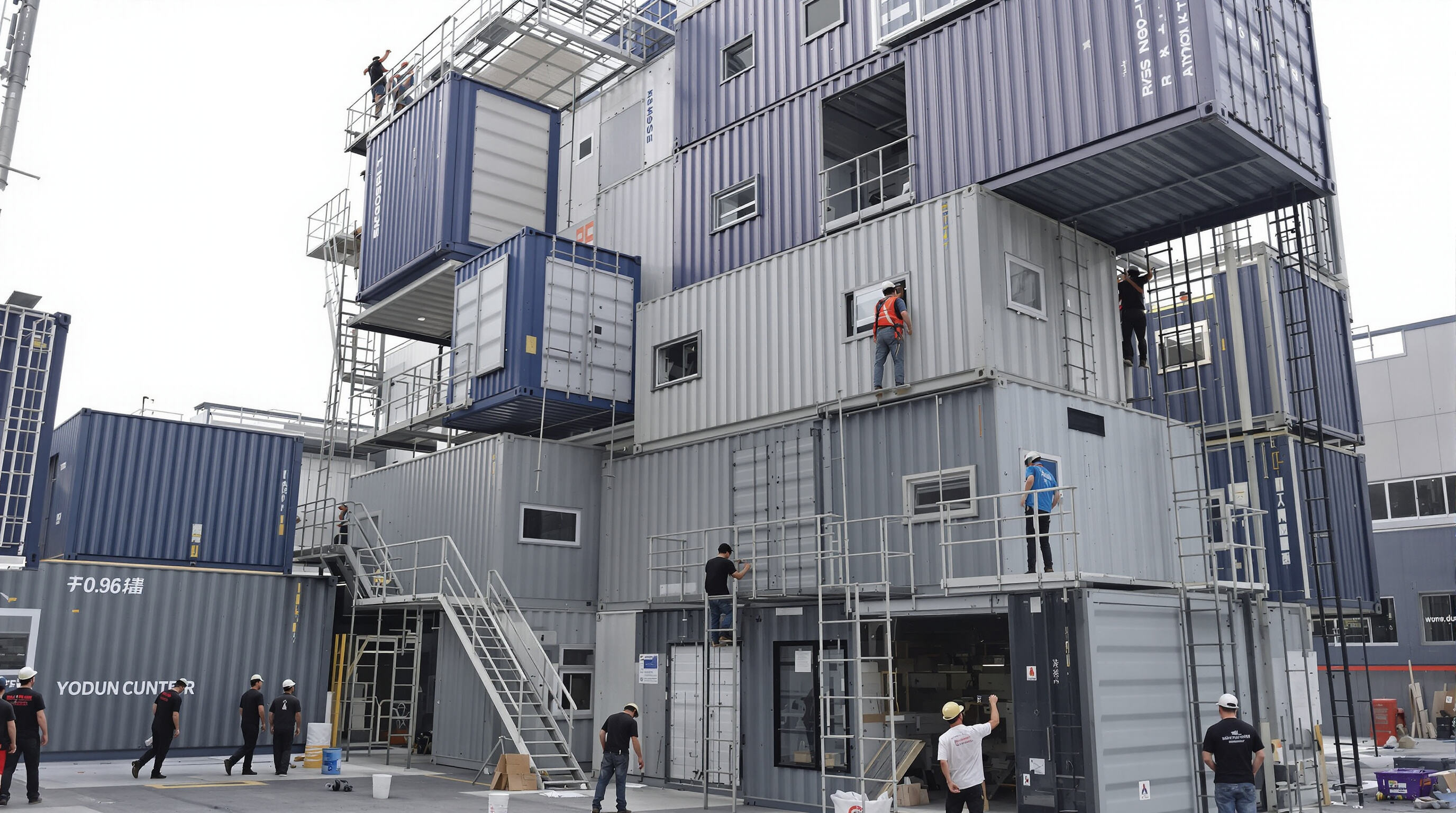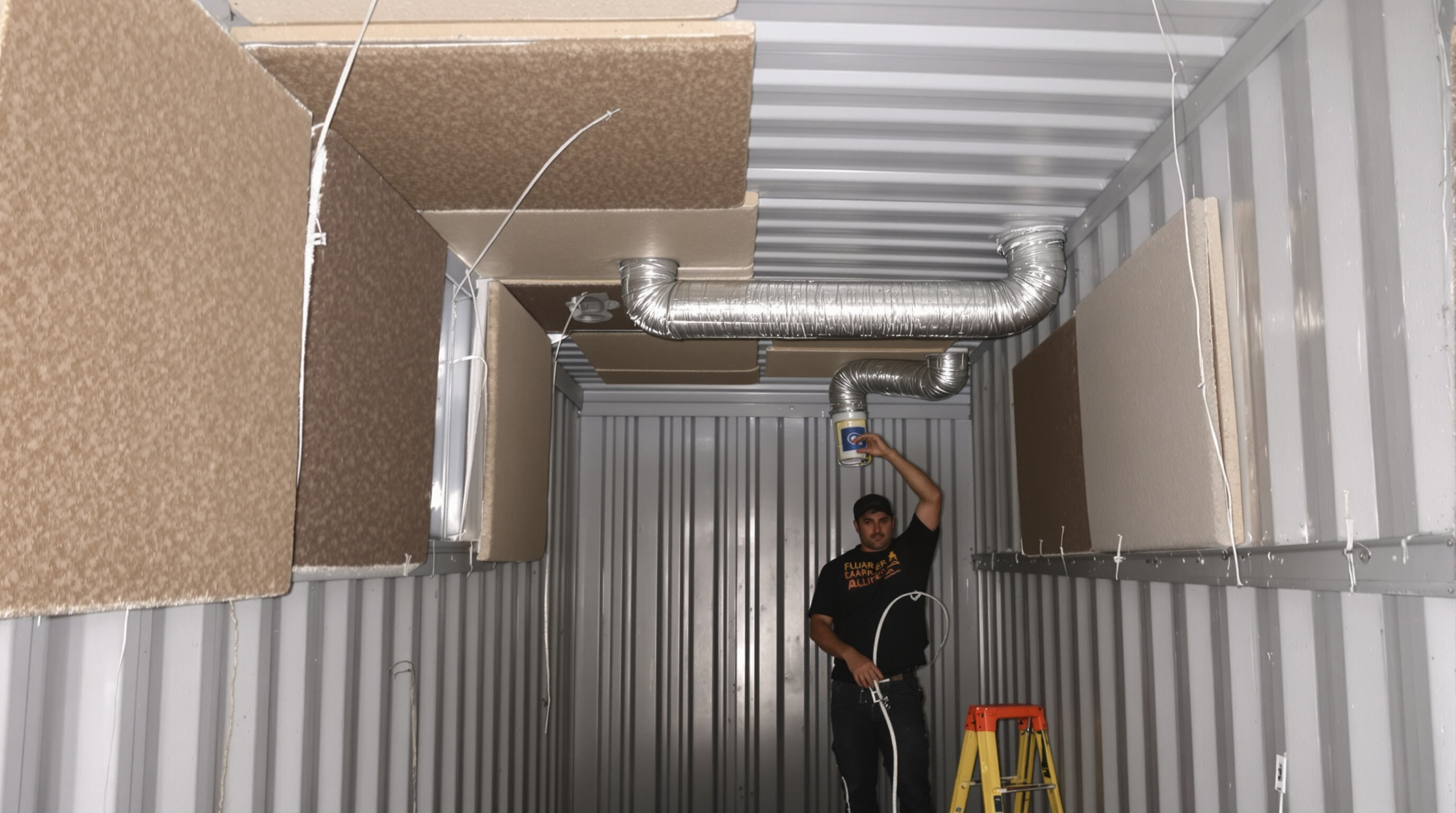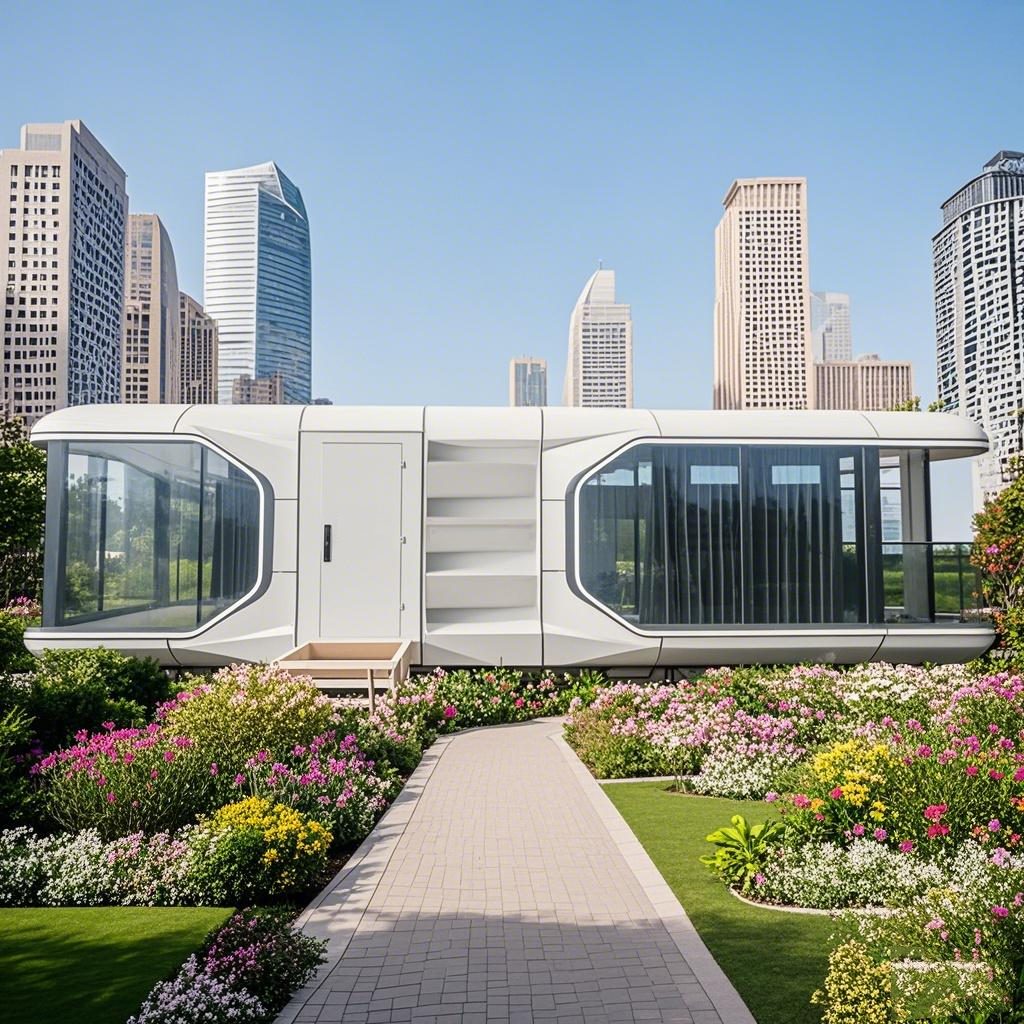Design Flexibility and Modular Construction of Container Homes on Set

Customization and Architectural Adaptability for Diverse Film Genres
What makes container homes so appealing is their incredible design versatility. Production designers love working with steel modules because they can turn them into just about anything from sleek cyberpunk apartments to run-down apocalypse hideouts. The containers are strong enough to handle all sorts of weird changes too like doors placed way off center, angled connections between units, or stacking them vertically which creates really interesting spaces perfect for thriller scenes or those sci-fi stories set in bleak futures. A recent survey by the Film Design Guild back in 2023 found that nearly 8 out of 10 studio art directors have started going with container sets when making movies in these kinds of genres. They just work better somehow with the gritty industrial look most directors want and how easy it is to modify them on set.
Modular Design Enabling Efficient Space Use and Reconfiguration
The standard sizes of shipping containers, usually around 20 feet or 40 feet long, make it much easier to plan space and change things around quickly when needed. Six to eight containers put together can create something like a 1,200 square foot detective style loft within three days flat. And guess what? Those same containers can be taken apart and rearranged into some pretty elaborate horror movie mazes by the next week. The fact that these containers cut down on construction waste by about 62 percent compared to regular wooden sets makes them really popular among film crews who care about going green. According to the Sustainable Filming Initiative from last year, this kind of modular approach saves tons of materials that would otherwise end up in landfills.
Rapid Deployment and Relocation Advantages for Tight Production Schedules
Container sets can be pre-fabricated offsite during pre-production and delivered fully finished, cutting on-site setup time by 40–50%. After filming, the units can be disassembled, stored, or transported to new locations—ideal for franchises shooting across continents. This logistical efficiency supports tight production timelines without sacrificing set quality.
Case Study: Container Homes in Post-Apocalyptic TV Set Design
Wasteland Chronicles, that post-apocalyptic TV show everyone's talking about, actually built its iconic ruined city using just 32 repurposed shipping containers. The design team got pretty creative with their materials, rusting metal surfaces chemically, adding all sorts of wonky walkways between rooftops, and angling containers at odd positions to look like buildings shaken by earthquakes. What makes this whole setup so impressive isn't just how it looks on screen but also the bottom line numbers. Compared to traditional set building methods, they managed to cut costs by around $740k while still having the flexibility to rearrange things during shoots when needed. Pretty smart move for a production looking to maximize creativity without breaking the bank.
Creating Cinematic Environments with Industrial Aesthetics
Container exteriors as urban, dystopian, or futuristic landscapes
Shipping containers with their basic shapes and industrial look tend to bring to mind either run-down cities or those massive futuristic metropolises we see in movies, and they don't need much changing to fit these themes. According to something mentioned at Milan Design Week back in 2025, around three out of four dystopian films made after 2022 feature container buildings somewhere in them. The metal frames let these boxes stack on top of each other really fast, creating those dense urban landscapes we associate with overcrowded futures. And when designers want that authentic post-apocalyptic feel, they often use weathering methods such as letting the steel rust in controlled ways, which gives everything that worn down appearance without actually waiting decades for nature to take its course.
Interior design aligned with character-driven storytelling
Container interiors offer a neutral backdrop that filmmakers love for storytelling purposes. When we see open spaces with visible structural elements like exposed beams, it often mirrors a character's straightforward nature or emotional fragility. On the flip side, when sets feature broken up spaces with odd metal panels sticking out everywhere, this usually points to some kind of mental instability or confusion within the story. According to research from Milan back in 2022, around two thirds of set designers actually rely on containers to map out how characters evolve throughout films. One common trick is swapping regular walls for glass sections, which visually represents a character becoming more open hearted as their story progresses.
Paint, lighting, and decor to enhance genre-specific visuals
The colors used in a scene set the mood pretty fast. Think about those sickly green tones that scream quarantine zone, or shiny chrome surfaces that just feel like something from another planet. Lighting folks get creative with containers too. Those ribbed metal walls create some amazing shadows when they install LED strips right between the corrugations, making it look like a futuristic city at night. Sometimes they'll throw in some flickering fluorescent lights to make people sit up straight during tense moments. Decorators really bring scenes to life with little touches that fit the story world. For dieselpunk stuff, expect lots of rusty exhaust pipes and grease stains everywhere. Climate fiction sets tend to have these weird solar panel installations bolted onto everything, giving off that post-apocalyptic vibe without being too obvious about it.
Technical Performance: Soundproofing and On-Set Functionality

Soundproofing Capabilities for Improved Audio Recording Quality
Steel tends to bounce around sound pretty badly, but with the right treatments, container setups actually work great for getting studio quality acoustics. When they spray on those sound deadening insulations and stack up acoustic panels in layers, it cuts down mid range frequencies somewhere between 15 to 20 decibels according to that study from acoustic engineers back in 2023. Most production teams these days go with mass loaded vinyl sheets and make sure all the seams are sealed tight with special acoustic caulk. This helps keep unwanted noise from leaking through, so even when things get busy on set, the recorded audio stays clean and usable without too much post processing needed later.
Managing Acoustics and Ventilation Challenges in Metal Structures
Sound engineers tackle unwanted echoes by placing those special perforated absorption panels where sound naturally bounces around most, plus hanging those vibration dampening things from the ceilings. For ventilation, they stick silencers on the system and line the ducts so air keeps moving but doesn't create extra noise. According to a survey done in 2022 across the industry, when these container setups are properly optimized, they manage to keep indoor noise down under 30 decibels even as they cycle fresh air through the space about four to six times an hour. That's actually pretty impressive because it satisfies both the OSHA guidelines for workplace safety and what movie theaters need for their premium sound experiences.
Sustainability and Cost Efficiency in Film and TV Production
Economic Benefits Compared to Traditional Set Construction
Repurposing old shipping containers really cuts down on what studios spend building sets, sometimes saving between 40 to 60 percent when compared with regular construction methods. The modular nature means there's less need for special fabrication work, while standard parts just take up around 30% less labor time overall, as noted in SPA research from last year. Container based sets also tend to stick around longer than most other options. Take this police station setup made for Netflix back in 2024 that got reused across three completely different shows without needing any major modifications. Wood frame structures tell a different story though. Studios usually end up spending somewhere between $18k and $32k getting rid of them after each production run, something that keeps coming up in various sustainability reports from major film companies.
Environmental Impact and Alignment With Green Production Standards
Using shipping containers for set designs cuts down on construction waste dramatically. Mid budget productions typically generate around 12 to 18 tons less trash when using containers instead of traditional materials, which would otherwise fill up about twenty standard containers worth of junk. Steel from these containers can be recycled at an impressive rate of around 92%, way better than the roughly 35% we see with wooden structures. Many top studios have started working with suppliers certified under ISO 14001 standards to hit their environmental goals. Warner Bros. Discovery actually saw their carbon footprint drop by nearly 30% on projects heavy in container usage back in 2023. The film industry is slowly but surely moving toward greener practices, making sets not only cost effective but also environmentally responsible over time.
FAQ
Why are container homes popular in film set designs?
Container homes are popular because of their design versatility, cost efficiency, and quick construction. They provide a modern industrial look that suits various film genres while being easily reconfigurable for different scenes.
How do container sets benefit film production schedules?
Container sets allow for rapid deployment and relocation, reducing on-site setup time by 40–50%. They can be prefabricated offsite and are suitable for productions shooting across various locations, supporting tight timelines without sacrificing quality.
Do container homes contribute to sustainable film production?
Yes, container homes cut down construction waste by about 62% and are 92% recyclable, aligning with green production standards and reducing the environmental impact compared to traditional set constructions.
How are container interiors used in storytelling?
Container interiors provide a neutral backdrop that helps convey a character’s emotional state or transformation, often using open spaces and structural elements like exposed beams or glass partitions.

